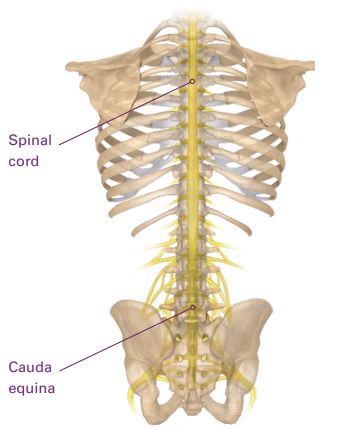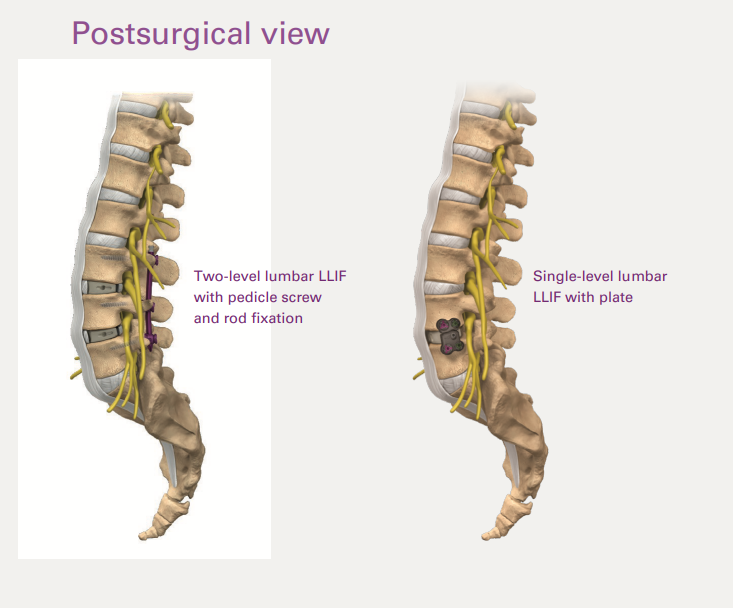Lateral Lumbar Interbody Fusion / LLIF Spine Fusion
Home » Neurosurgery Treatments » Spine Surgery and Spinal Procedures » Lateral Lumbar Interbody Fusion / LLIF Spine Fusion
On this page, our spine neurosurgeons in Palm Beach County provide general information on a Lateral Lumbar Interbody Fusion – or LLIF – which is a type of spine fusion performed The Morrison Clinic™.
This information is not meant to replace any personal conversations that you might wish to have with our South Florida neurosurgeons, or other member of your healthcare team, and not all the information here will apply to your individual treatment or its outcome.
About the spine
The human spine is made up of 24 bones or vertebrae in the cervical (neck) spine, the thoracic (chest) spine, and the lumbar (lower back) spine, plus the sacral bones. Vertebrae are connected by several joints, which allow you to bend, twist, and carry loads. The main joint between two vertebrae is called an intervertebral disc. The disc is made of two parts, a tough and fibrous outer layer (annulus fibrosis) and a soft, gelatinous center (nucleus pulposus). These two parts work in conjunction to allow the spine to move, and also provide shock absorption.
About the spinal cord and cauda equina
Each vertebra has an opening (vertebral foramen) through which a tubular nervous structure travels. Beginning at the base of the brain to the upper lumbar spine, this structure is called the spinal cord. Below the spinal cord, in the lumbar spine, the nerves that exit the spinal cord continue to travel through the vertebral foramen as a bundle known as the cauda equina. At each level of the spine, spinal nerves exit the bony spine then extend throughout the body.

What can cause your back pain?
There are several primary causes of spine problems. The majority of the symptoms are caused by either instability or by disc, bone, or ligaments pressing onto the nerve roots and/or spinal cord.
Degenerative Disc Disease (DDD)
During the natural aging process, the discs between each vertebral body can lose their flexibility, height, and elasticity which can cause a tear in the tough outer layer of the disc, causing the disc to herniate, bulge, or leak the gelatinous core. The bulges or leakages can end up compressing the nerve roots and/or spinal cord, causing symptoms including, but not limited to lower back and/or leg pain.
Degenerative Spondylolisthesis
Degenerative spondylolisthesis is a condition where one vertebra has slipped forward over another one below it. This instability typically occurs as a result of degenerative changes but may also be caused by stress fractures, or congenital abnormalities (birth defects), and in rare cases from a tumor or trauma.
Degenerative Scoliosis
Adult degenerative scoliosis is a condition where a rightleft or lateral curve develops in a previously straight spine. This curvature occurs as a result of deterioration of the disc and joints in the back of the spine. As the joints degenerate they create a misalignment in the back, resulting in a bend or curvature, causing symptoms including lower back and/or leg pain.
What are the treatment options?
Many symptoms can be treated without surgery including rest, heat, ice, medication, injections, and physical therapy. It is important to speak with a physician about the best option. If symptoms do not improve with conservative treatment, physicians may recommend spinal surgery. Surgery is reserved for those who do not gain relief from nonoperative forms of treatment, patients whose symptoms are increasing or worsening, and/or patients that present with a spinal condition which indicates the need for surgery. Many symptoms can be treated without surgery including rest, heat, ice, medication, injections, and physical therapy. It is important to speak with Dr. Morrison and our back pain care services team about the best option.
What is an Lateral Lumbar Interbody Fusion (LLIF® )?
The Lateral Lumbar Interbody Fusion (LLIF) technique is a minimally disruptive surgical procedure performed through the side of the body. It is designed to treat a range of spinal pathologies. Using nerve monitoring technology, the surgeon gains lateral (side) access to the spinal column, avoiding any major nerves in the area between the incision and the column. The LLIF procedure does not require an anterior (front) or posterior (back) exposure, and thereby does not present the same risks of vascular and/or neural injury as traditional approaches.
Can an LLIF® be right for me?
If you require spinal surgery, your physician may determine that the LLIF procedure is a good option for you. Some examples of pathologies (conditions) that may benefit from the LLIF procedure include:
- Degenerated discs and/or facet joints that cause unnatural motion and pain
- Slippage of one vertebra over another (degenerative spondylolisthesis)
- Change in the normal curvature of the spine (degenerative scoliosis)
Conversely, Dr. Morrison may determine that an LLIF procedure is not a good option for you. It is important to discuss this with our South Florida spine surgeons in order to determine the best course of treatment for you.
The Morrison Clinic™ Prefers Centinel Spine Hardware

What to expect from a LLIF procedure
Before surgery
Dr. Morrison will review your condition and explain treatment options, including medications, physical therapy for back pain, and other surgeries. Should you have any questions regarding the procedure, do not hesitate to ask us.
During surgery
After you are sedated, positioned on your side, and surrounded by the appropriate surgical draping, an xray image is taken of your spine to identify the location of the operative disc space.
Step 1: Approach. Dr. Morrison will make a small incision on the lateral (side) of your body. Dilators will be used to direct the path to the affected disc space while monitoring the local nerves. Once the optimal path has been determined, a retractor will be utilized to hold the skin incision open, providing access and visibility to the affected area.
Step 2: Disc removal. The diseased or damaged disc is removed to reduce pressure from the cord or symptomatic nerve root.
Step 3: Implant. An appropriate implant, chosen by our expert spine surgeons, will be placed into the disc space to restore the proper disc height and provide support while bone grows between the vertebral bodies during the fusion (bone-healing) process. That segment of your spine will eventually stabilize once fusion occurs.
Step 4: Fixation. Generally, some method of internal fixation will be used to act as a stabilization device (internal brace) to help hold everything in place while fusion occurs. This could be a combination of screws and plates that are affixed to the adjacent vertebrae. Dr. Morrison will determine what, if any, kind of fixation is necessary during the procedure.
After surgery

After surgery you will wake up in the recovery room, where your vital signs will be monitored and your immediate postoperative condition will be carefully observed. Once the medical staff feels that you are doing well, you will be returned to your room in the hospital. Our experienced spine neurosurgeons will determine the best postoperative course for you. The day after your surgery, Dr. Morrison may instruct you to use a brace for a period of time to assist with the spinal fusion process.
Supervised by trained medical professionals, your physician may ask you to carefully sit, stand, or walk. Your physician will also discuss with you any medications to take home, as well as a prescribed program of activities. Our team will provide instructions on wound care, exercises, and limitations to postoperative activity.
Frequently asked questions
Can I shower after surgery? You can shower 2-days after surgery.
Will I have a scar? You will have a small scar on the side of your flank.
When can I drive? For a period of time after your surgery, you may be cautioned about activities such as driving. Your physician will tell you when you may drive again.
Can I travel? The implants used in the LLIF procedure may activate a metal detector. Because of increased airport security measures, please call your local airport authority before traveling to get information that might help you pass through security more quickly and easily. Our neurosurgery office can provide a patient identification card.
What are the potential benefits of an LLIF® procedure?
Benefits of an LLIF procedure, when compared to traditional lumbar interbody fusion surgery, may include:
- Smaller incision
- Less blood loss during surgery
- Reduced operative time
- Reduced hospital stay
- Reduced postoperative recovery time
What are the potential risks of an LLIF® procedure?
Keep in mind that all surgery presents risks and complications that are important to discuss with your surgeon prior to your surgery. Listening to your physician’s guidance, both before and after surgery, will help your recovery. Albeit risks remain low for surgery, they are possible. Potential risks following LLIF surgery include:
- Problems with anesthesia
- Bleeding
- Infection
- Stroke
- Death
- Nerve damage
- Problems with the graft or hardware
- Ongoing pain
This is not intended to be a complete list of the possible complications
Ready to get started?
The first step involves scheduling or reviewing medical imagery of your spine in order to make an informed assessment.
If you already possess recent imagery of your spine, you can securely transmit then to our office using our helpful online tools,

